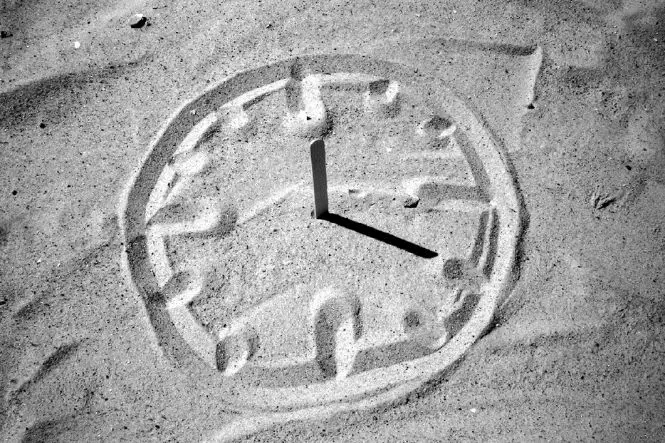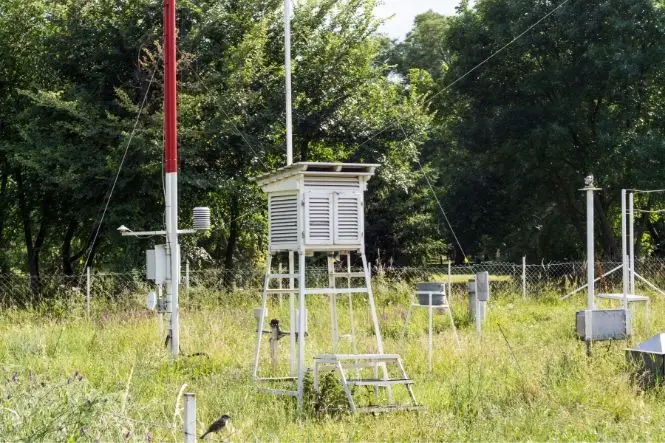Before watches and clocks were invented, people used the position of the sun in the sky to guess the time of day, but this couldn’t be very accurate. The next step was the invention of the sundial, when someone noticed the way that shadows moved across the ground over the day, and realised that this was roughly the same each day, so could be used to tell the time. This was the basic sundial, and was much more accurate than just using the position of the sun. Sundials became more accurate, and by 3500 BC, people in Egypt were using portable sundials. One problem with sundials is that they don’t work when it’s not sunny, so can’t be used to tell the time on dull days or during the night.
Making a sundial
It’s easy to make a very simple horizontal sundial, using an ice-cream container, some sand, some modelling clay, a piece of dowelling, a flat piece of wood and a marker pen.
Put the lump of modelling clay in the middle of the bottom of the ice cream container and fill the container with sand. Make a hole in the middle of the lid and put the lid back on tightly. Put the container in the middle of the flat piece of wood somewhere that gets the sun at all times of the day, and poke a piece of dowelling through the hole in the lid, pushing it down so that it sticks in the modelling clay. This part of the sundial is called the ‘gnomon’. Put some modelling clay around the bottom on the stick to keep it steady. Every hour, on the hour, mark where the shadow is, and write the time next to the mark. Are the marks even? The marks will be different distances apart at different times of the day, because the earth is tilted on its axis.
The next day, use the sundial to guess the time. Check the time on the sundial every week. Do the times on the sundial change according to the time of year? Because the earth goes round the sun once a year in an elliptical (oval) orbit, sometimes the earth is closer to the sun, and sometimes it is further away. This will affect the shadow. Don’t forget that the clocks go forward in spring and back in autumn – this will affect the sundial, too, and it’s not as easy to change as a watch.
A More Accurate Sundial
To be accurate all year round, the gnomon of a horizontal sundial must be at an angle that is the same number of degrees as the latitude of its location. Latitude is a measure of how far somewhere is from the equator, and is 0 degrees at the equator and 90 degrees at the North or South Pole.
Equatorial sundials have the face of the sundial at an angle that is parallel to the earth’s equator. The markings for the hours will be spread evenly on this type of sundial.







